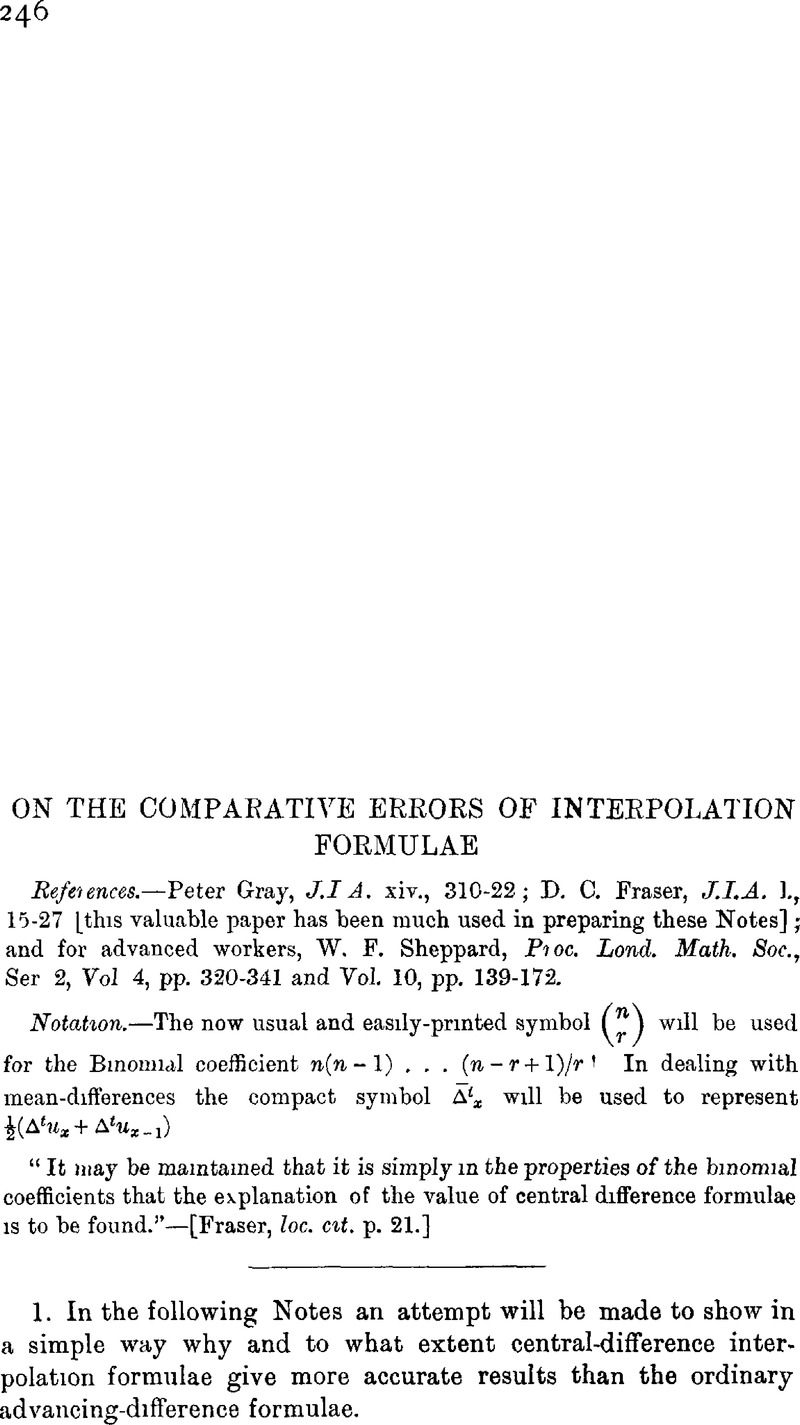No CrossRef data available.
Published online by Cambridge University Press: 07 November 2014

page 247 note * If ![]() (and therefore the differential coefficients of lower orders, and u itself) is continuous for the range of x involved, a rigid expression for the error is found by replacing
(and therefore the differential coefficients of lower orders, and u itself) is continuous for the range of x involved, a rigid expression for the error is found by replacing ![]() where ξ is a value of the variable lying between the least and the greatest of the quantities 0, n, and x. But the actual value of ξ is unknown; and for ordinary functions the result in the text is sufficient. Mr. D. C. Fraser, loc. cit. p. 22, says, “in any formula the error, whether its magnitude can be estimated or not, depends on the last difference employed”; but it would appear that the last three words should be replaced by “first difference neglected.”
where ξ is a value of the variable lying between the least and the greatest of the quantities 0, n, and x. But the actual value of ξ is unknown; and for ordinary functions the result in the text is sufficient. Mr. D. C. Fraser, loc. cit. p. 22, says, “in any formula the error, whether its magnitude can be estimated or not, depends on the last difference employed”; but it would appear that the last three words should be replaced by “first difference neglected.”
page 247 note † Because the use of the mean difference involves the introduction of another u, preceding those previously used.
page 250 note * That is the total coefficient when the formula is written in terms of ordinary (not mean) differences. In Bessel's and Stirling's formulae, taken to a term ending with an ordinary difference, part of the total coefficient of that difference is implicitly involved in the preceding mean difference.
page 250 note † Viz. : the term involved in ![]() only; i.e. u t or u t + n according as the term before the last involves
only; i.e. u t or u t + n according as the term before the last involves ![]()
page 256 note * Taking n x as falling between 1st and 2nd tabulated values of u.
page 256 note † Value of ![]() which gives a maximum error of 1 in the last place (irrespective of errors due to higher differences).
which gives a maximum error of 1 in the last place (irrespective of errors due to higher differences).